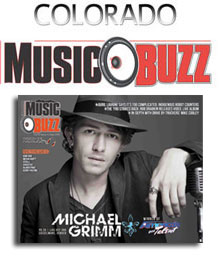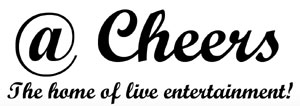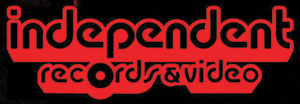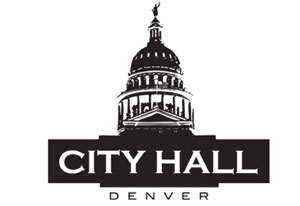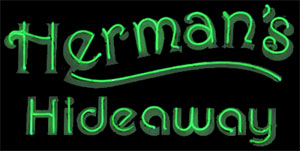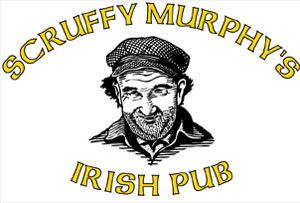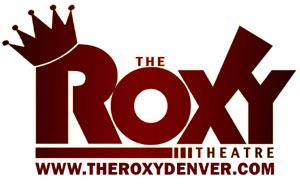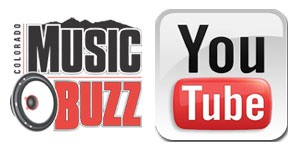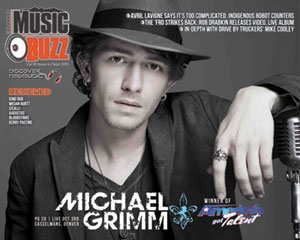The Manager’s Corner- July 2014
by Chris Daniels
I’ve managed my own band for 30 years and I’m in the Colorado Music Hall of Fame. While all that’s nice, today’s music business is changing at light-speed and you have to know what’s going on. Careers are still built on some tried and true elements: great music, performance and timing. But today’s artists must work harder than ever before to succeed. And we have new tools to help young musicians grow their fan base. The book I wrote for my class at CU Denver on artist management is called “DIY: You’re Not in it Alone.” While you are ultimately responsible for your own career, these days there is help out there.
In past columns I’ve focused exclusively on the current crop of tools that help artists survive and thrive. But what if we threw it all away? No internet, no computer for recording songs at home, no Facebook, Spotify, Pro Tools – nothing other than what you would find in an analogue world for capturing and marketing music. How would this change our approach? Does a rewind to 1984 teach us anything about ways to improve how we make and market music in 2014? I think it does and here is why.
In 1984, if you were going to do a record it would be in a studio with an hourly rate. There was no Pro Tools, Ableton, and Reason etc. Yes, there were some home studios using reel-to-reel tape machines. Yes, Buddy Holly recorded his early hits in his garage in the 1950s – but in general you had to go into a “professional” studio, pick your very best tunes, and rehearse the hell out of them before you recorded. That usually meant performing live in a number of places to get the arrangements tight, to see how the audience connected to the songs and, honestly, to see if you were any good.
Fast-forward (analogue term) and we have the incredible ability to start recording anytime we want on a home computer. Hell, we don’t even think of it as a “single” and the concept of an album has come into question too. But here is my point: what if you brought some of your song ideas to the “testing ground” before you slap them up on SoundCloud? What if you took the songs or beats or whatever it is you create, and brought it to the public to see what works and what doesn’t work? You can learn a butt-load from playing your songs to friends and fans. Plus, you can really start to learn about arrangements for those songs when you play them with others. If you’re in a band, you get to explore the arrangements and see how the songs change when you take them off Garage Band and put them on real instruments with real players. If you are good, and lucky, that mix of ideas and players will take your music to a better place than the loops you used for your drum tracks.
Let’s say your starting point is 15 songs. You might be able to refine that to the10 best that really connect with the audience. In theory you are better prepared for the recording process – whether at home or in a pro-studio. Now the program tools like auto-tune are not studio tricks that you use because you can’t sing in tune – they are tools to help you capture the energy of the performance you created live for your fans. Those digital audio workstation tools and tricks become something that help you capture the exact “take” you want– you start developing an idea of what a “good performance” on a recording really is. Tools can fix technical shit but they can’t fix an inferior track. Check out some of the recordings by artists like The Clash or Blondie or even the Police from that old era. The performances are remarkable even if technically flawed.
In 1984 when your project was finished (and you’d been playing the music live), there was typically a time gap between getting those tracks ‘mastered’ for vinyl (CDs were just starting to enter the market) and when you got that first ‘test pressing’ in your hands. Then, that test had to be approved before the plant started the “pressing run.” At the same time you were planning an actual “release date” or “street date” for that recording and the marketing to go along with it. If you had a label, they did all that, but a lot of Hip Hop and Punk and Jam bands put it out on their own. What did those ancient fuddy-duddies do back in 1984 while they were waiting for the actual albums to “ship”? That time was filled with research into distributors, developing a plan for what they would do to promote their album. If they put it out themselves there was artwork, packaging, shipping and ‘in-store displays” to be considered along with the actual ‘street date’ and the marketing efforts that accompanied that date. (NOTE: If you were signed to a label then – or now – you work off THEIR clock – when they want to release the recording and do the marketing. That aspect of label control has not really changed much.)
In 2014 I see far too many young artists finish their recording and upload it to SoundCloud – and maybe iTunes via TuneCore or CD Baby, and if they are really together they’ll add ReverbNation and YouTube. Many assume good things will start happening because they uploaded the tracks a week after their friend mastered the files. Why should that work? Just because we put a butt-load of effort into writing and recording the music doesn’t mean our fans give a crap. I’m not denigrating your or my fans – it’s just a fact that if a local Colorado artist starts to gain traction in the marketplace it usually means they worked their asses off to create that buzz. And our fans like to be a part of something that is building and exciting and buzz worthy. So that “time” between getting the ‘mastered recording’ in your hot little computer hands and bringing it out into the marketplace is missing for far too many young artists. What would happen if you took a page from 1984 and made the most of that recording’s release and didn’t just slap it up on the various internet sites? If you take 30 to 60 days to make a plan on how to get the most out of your recording’s release, can you make a bigger buzz when it hits the street? What media outlets, blogs, music websites, internet radio, and ‘usual suspect’ social media sites are you going to reach out to? What kind of distribution could you imagine? How can you make the biggest noise possible with your recording?
Finally, in 1984 radio was the one place an independent artist had any chance of getting a promotional push that could change their local following into a national one. There was no viral-internet YouTube success and MTV/VH-1 only played the majors. So radio was your one real shot. There were (and still are) various ‘formats’ to know, understand and work with. There were “independent promoters” that indie artists could (and still can) consult and hire and there was straight forward one-on-one connections that had to be made in order for a recording (single or album) to get a chance at getting airplay – and more important, get it put into “rotation” on those stations. Label ‘radio promotion’ departments’ knew what DJs and what station programmers to schmooze. They even knew the time-of-day programmers would take ‘music calls’ from the labels. The independent radio promoters knew all that too – and still do!
These days we just toss it up on the internet and think the world will beat a viral discovery path to our upload door – like we are all dancing babies or cats stuck in a cardboard box. What would happen if we all took the time to do the research that those radio promoters did in 1984? What if you took the time, energy and commitment to see what, blogs, internet radio, music services, and even terrestrial radio might be good ‘partners’ in the marketing efforts for your music? I can guarantee you that it would get farther than the ‘toss it up on SoundCloud” approach that far too many of us use. It’s a good parking place but there is a hell of a difference between a parking space and a flippin’ parade.
What I tell my students and musician friends who ask me, “how do I get my music out there?” is to use every single tool that is available and effective in 2014. But, I also tell them to take a page from those fossils and dinosaurs that came up in the ranks and who are still out there making music. They polished and refined their music before they recorded it. They came into the recording process prepared and rehearsed with arrangement ideas and even album concepts. They researched all the possible outlets to reach their fan base from great local stores like Twist & Shout to major distributors. They also researched and used every bit of technology they could. Technology for us now is Spotify, YouTube, Tumblr and Instagram – but what I see is that the R&D for a marketing PLAN is all but missing in many of our attempts to reach our fans in 2014.
Closing notes: In the late 70s there was a huge expansion in the concepts for a great live show especially coming out of clubs like CBGB in New York. This area, maybe more than any other I’ve seen, is truly exciting for me personally to watch again in 2014. Though 1989 ushered in the beginnings of major package tours like the Stones “Steal Wheels” – bands like the Police in 1979 blew small venue fans away – (far more then Sting ever has in years since.) What excites me about 2014 is watching student bands or young bands that I see out on the road really bringing this kind of new energy to shows again. They have phenomenal presence, great songs and playing. They use ‘pacing’ and seem to be able to really connect with their fans. They are doing it at an early age.
So take heart all you naysayers out there. The younger generation that are coming up really have something to offer. What I hope they will understand is that the year of Orwell still may have something to teach them, if they are willing to listen – then again – maybe they shouldn’t!
Category: Shop Talk
